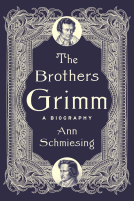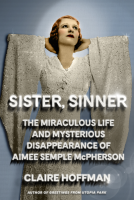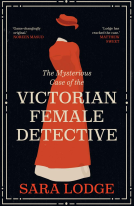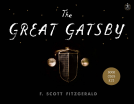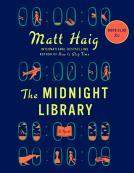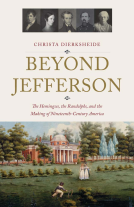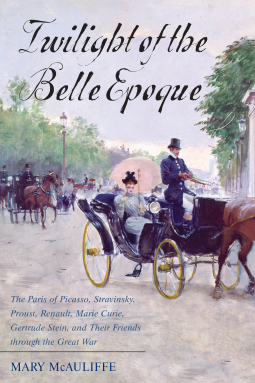
TWILIGHT of the BELLE EPOQUE
The Paris of Picasso, Stravinsky, Proust, Renault, Marie Curie, Gertrude Stein, and Their Friends through the Great War
by Mary McAuliffe
This title was previously available on NetGalley and is now archived.
Send NetGalley books directly to your Kindle or Kindle app
1
To read on a Kindle or Kindle app, please add kindle@netgalley.com as an approved email address to receive files in your Amazon account. Click here for step-by-step instructions.
2
Also find your Kindle email address within your Amazon account, and enter it here.
Pub Date Mar 24 2014 | Archive Date Mar 31 2014
Description
In Twilight of the Belle Epoque, McAuliffe portrays Paris in full flower at the turn of the twentieth century, where creative dynamos such as Picasso, Matisse, Stravinsky, Debussy, Ravel, Proust, Marie Curie, Gertrude Stein, Jean Cocteau, and Isadora Duncan set their respective circles on fire with a barrage of revolutionary visions and discoveries. Such dramatic breakthroughs were not limited to the arts or sciences, as innovators and entrepreneurs such as Louis Renault, André Citroën, Paul Poiret, François Coty, and so many others—including those magnificent men and women in their flying machines—emphatically demonstrated. But all was not well in this world, remembered in hindsight as a golden age, and wrenching struggles between Church and state as well as between haves and have-nots shadowed these years, underscored by the ever-more-ominous drumbeat of the approaching Great War—a cataclysm that would test the mettle of the City of Light, even as it brutally brought the Belle Epoque to its close. Through rich illustrations and evocative narrative, McAuliffe brings this remarkable era from 1900 through World War I to vibrant life.
Portrays
Belle Epoque Paris in full flower through the lives of Picasso,
Matisse, Stravinsky, Debussy, Ravel, Proust, Marie Curie, Gertrude
Stein, Jean Cocteau, and Isadora Duncan
Illustrates
the important contributions to the era by innovators and entrepreneurs
such as Louis Renault, André Citroën, Paul Poiret, François Coty, and
the pioneers in the French aircraft industry
Demonstrates that the Belle Epoque, remembered in hindsight as a golden age, was shadowed with tensions and fault-lines
Shows
the undercurrents that contributed to the Belle Epoque’s decline,
including political struggles (between Church and State, haves and
have-nots) and the steady approach of the Great War, as well as the
emergence of an edgy new era (heralding the postwar Jazz Age) that would
begin to replace it even before the war’s end
Depicts Paris from its glory years to the shattering conclusion of World War I
Mary McAuliffe holds a PhD in history from the University of Maryland, has taught at several universities, and lectured at the Smithsonian Institution. She has traveled extensively in France, and for many years she was a regular contributor to Paris Notes. Her books include Paris Discovered, Dawn of the Belle Epoque, and Clash of Crowns. She lives in New York City with her husband.
A Note From the Publisher
Chapter 1: Enter the King (1900)
Chapter 2: Bohemia on the Seine (1900)
Chapter 3: Death of a Queen (1901)
Chapter 4: Dreams and Reality (1902)
Chapter 5: Arrivals and Departures (1903)
Chapter 6: Alliances and Misalliances (1904)
Chapter 7: Wild Beasts (1905)
Chapter 8: La Valse (1906)
Chapter 9: Winds of Change (1907)
Chapter 10: Unfinished Business (1908)
Chapter 11: Idyll (1909)
Chapter 12: Deep Waters (1910)
Chapter 13: Between Heaven and Hell (1911)
Chapter 14: Dancing on the Edge (1912)
Chapter 15: Fireworks (1913)
Chapter 16: "Dear France, dear country" (1914)
Chapter 17: "This war which never ends" (1914–1915)
Chapter 18: "Ils ne passeront pas" (1916)
Chapter 19: Dark Days (1917)
Chapter 20: Finale (1918)
Bibliography
Advance Praise
— Rachel Mesch, Yeshiva College; author of Having It All in the Belle Epoque
Praise for Dawn of the Belle Epoque:
A marvelous vision of Paris at its heady, uncertain best.
— Publishers Weekly
Praise for Dawn of the Belle Epoque:
Today, Paris retains its allure as a mecca for lovers of art, fashion, and high culture. To an extent, that allure is a legacy of the Belle Epoque. . . . As the term indicates, this was an era of wonderful cultural flowering. . . . McAuliffe tracks, on a year-by-year basis, this explosion of artistic expression. She does not ignore the seamy underside of this glittering picture. . . . This is an excellent and honest portrayal of an exciting and vital era in European history.
— Booklist
Praise for Dawn of the Belle Epoque:
Reads more like a novel than an academic history. . . . Rich with the flavor of words taken from primary sources, the book provides an intimate look at the very human side of history. . . . Today's Paris rose from war and ashes, as Mary McAuliffe's Dawn of the Belle Epoque so eloquently proves.
— The New York Journal of Books
Praise for Dawn of the Belle Epoque:
McAuliffe has added a truly remarkable degree of insight into both the lives of the participants and the turbulent world they inhabited. McAuliffe paints with broad, majestic strokes a world that has been lost to us or perhaps never was.
— Washington Independent Review of Books
Praise for Dawn of the Belle Epoque:
Mary McAuliffe’s book is a charming and detailed meander through the lives of the writers and artists who lived and worked in Paris. . . . Each chapter describes a year in the life of the French capital, during which the author depicts the major Parisian events and provides a fascinating variety of anecdotes, little-known facts, and background detail that any connoisseur of the city will relish. . . . The result is an informative and evocative guide to late nineteenth-century Paris that would be an ideal accompaniment to a stay in the capital. . . . A most entertaining and readable account of a fascinating era and will be useful to both students of Paris and visitors alike.
— French Studies
Praise for Dawn of the Belle Epoque:
McAuliffe should be strongly commended for corralling such an immense amount of data into a tightly paced, informative, and highly readable compendium. The book is sure to delight readers as much as it informs them.
— Contemporary French Civilization
Praise for Dawn of the Belle Epoque:
McAuliffe’s deep research in both primary and secondary sources, combined with her skilled reconstruction of social and professional networks, results in a wealth of fascinating, roughly interwoven biographies and historical events. . . . [I]t is an evocative and pleasurable read.
— French History
Marketing Plan
Radio tour
Regional author events
Radio tour
Regional author events
Available Editions
| EDITION | Ebook |
| ISBN | 9781442221635 |
| PRICE | $29.95 (USD) |
Average rating from 12 members
Featured Reviews
 Heather B, Librarian
Heather B, Librarian
Mary McAuliffe will take you back into another time in Paris. She has done her research and it shows. Her book is wonderful and you can almost picture yourself in her book with the characters. There are so many fabulous characters in her book that it makes you want to reread the book.
